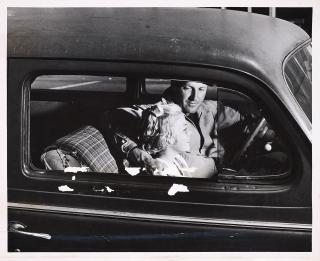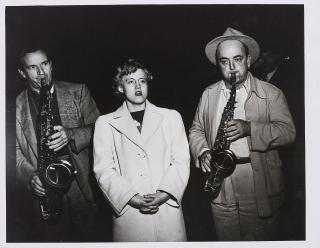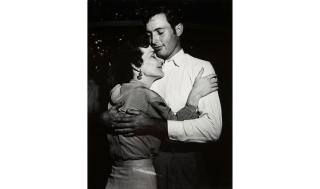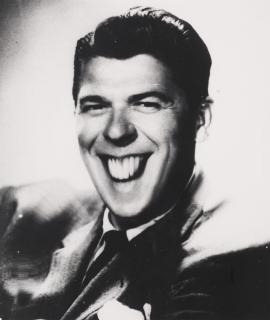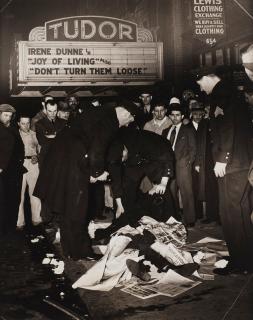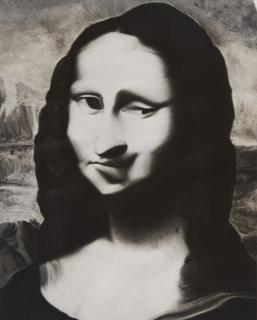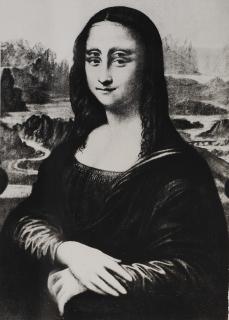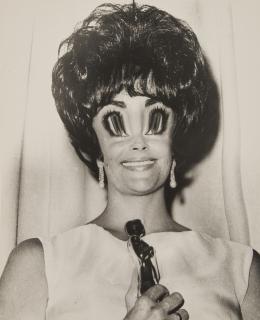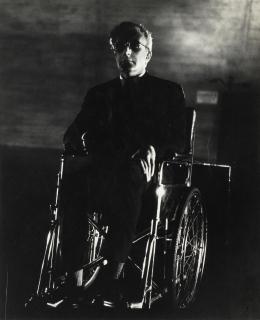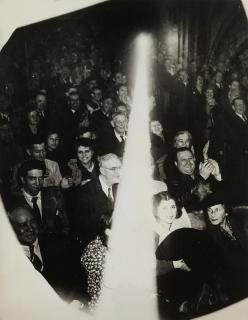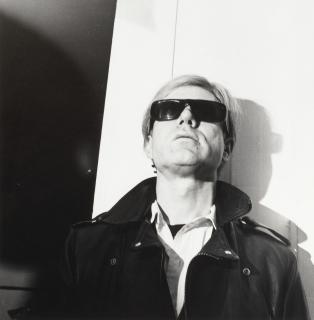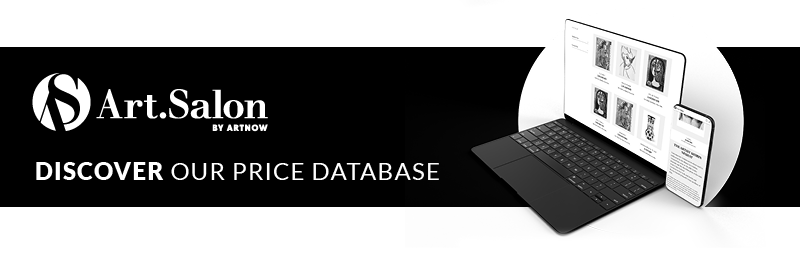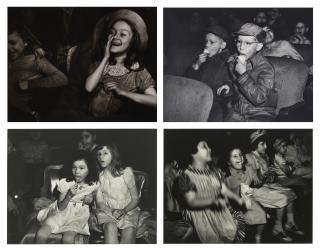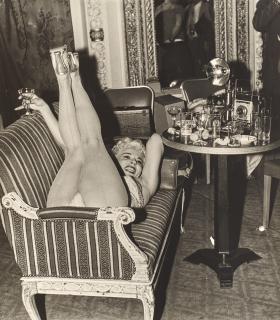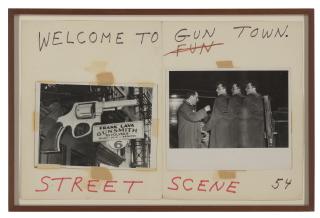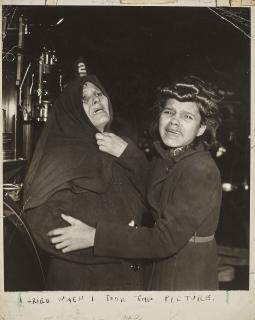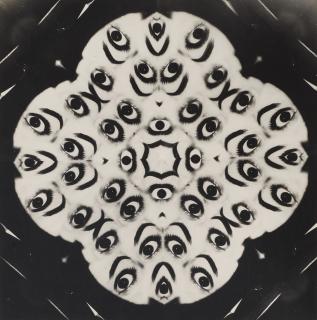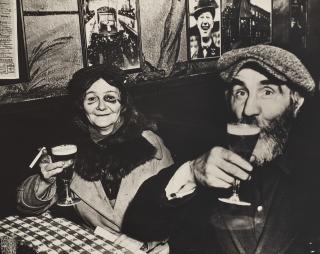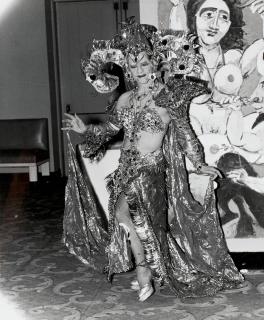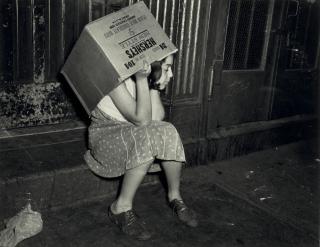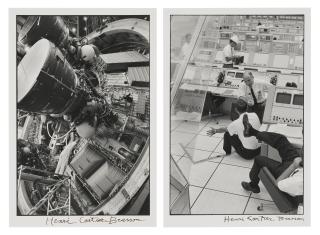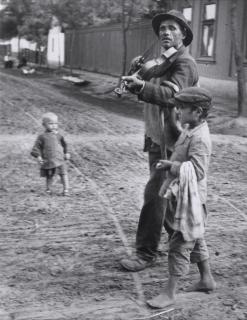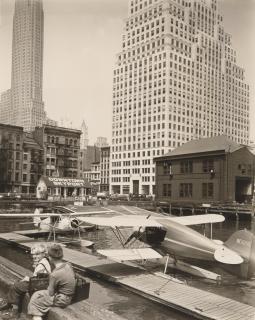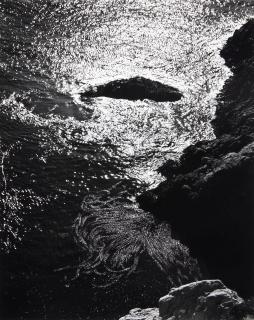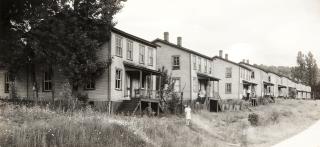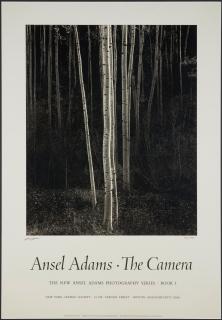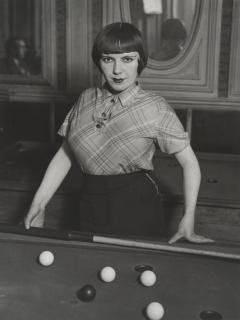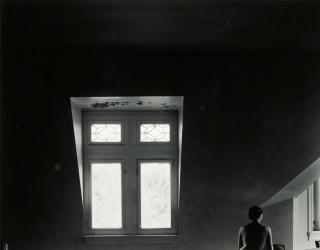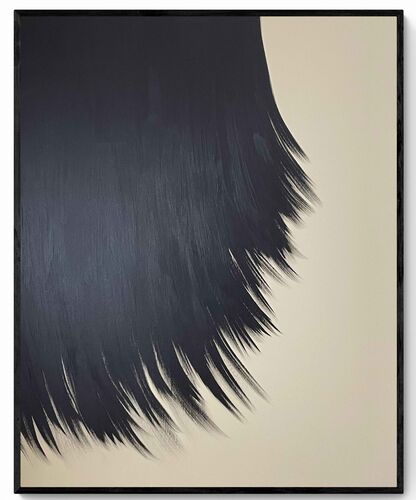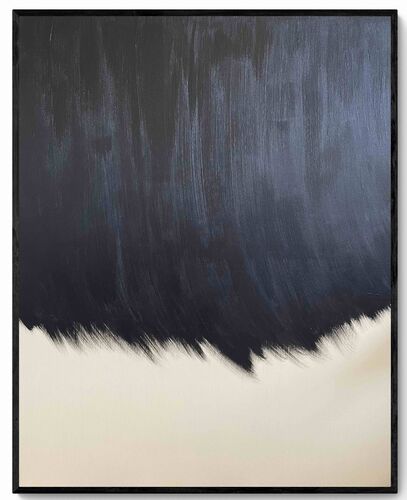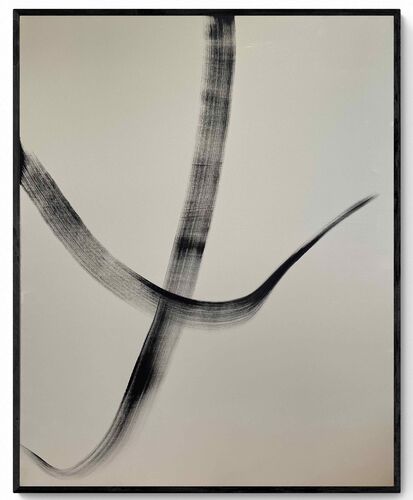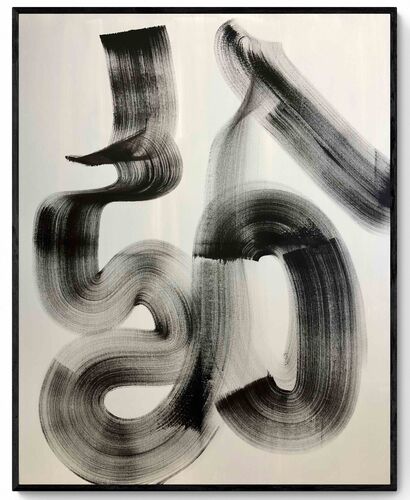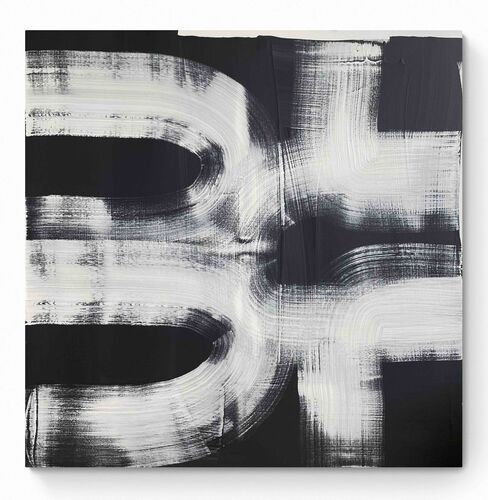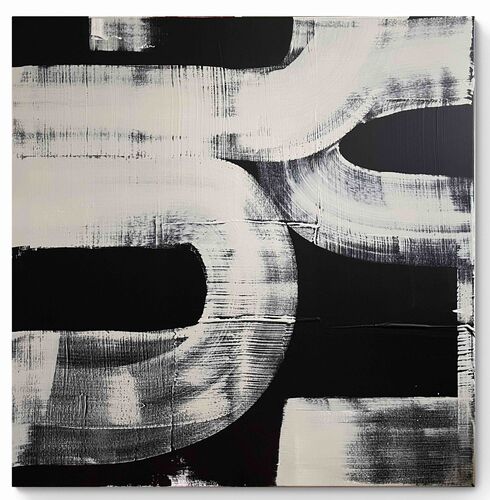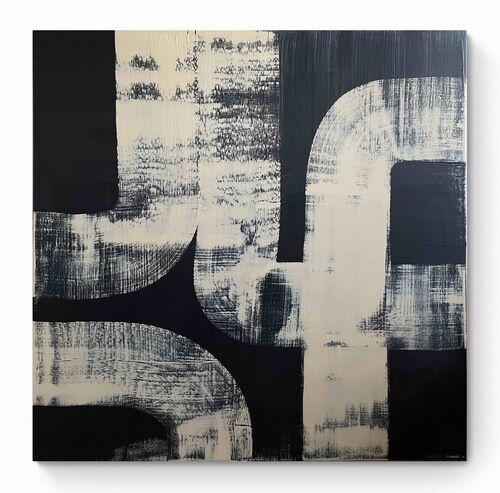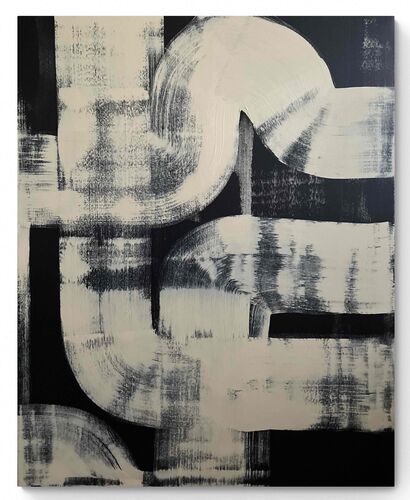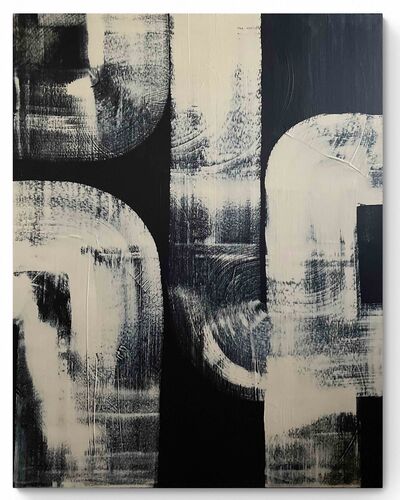Weegee Arthur Fellig | 1899 - 1968
The artist Weegee
- US photographer with Ukrainian roots.
- Press photographer who was famous for intimate images of crimes and accidents.
- From the 1940s increasingly artistic photographs with caricatural »distortions«.
Weegee was born Ascher Fellig in 1899 near Lemberg in Galicia. Today the city bears the name Lviv and is located in western Ukraine. The Jewish family emigrated to the United States in 1910 and resided in Manhattan. Weegee's first name was changed by his parents from Ascher to Arthur to make life easier for him in the new country. At the age of 14, Weegee left school and worked as a candy salesman and as an assistant to a photo dealer. This brought him into contact with cameras and he took his own street photographs early on. After a few odd jobs, Fellig landed a job as a photo lab assistant and substitute reporter at a New York photo agency when he was of age, which laid the foundation for his later career.
In 1935, Fellig went into business for himself as a press photographer. Within a few years, he succeeded in becoming famous in professional circles. His photographs of traffic accidents, fire disasters and corpses, often shot gangsters, appeared regularly in various newspapers and were well-known in the city. From 1938, Fellig was the first and for a long time the only press photographer to receive permission to own a police radio. Thus, he was often the first to arrive at crime scenes and took photos showing only the people involved and not yet any barriers. To quickly secure his photos, he developed them in a darkroom in the trunk of his car.
His nickname Weegee, which he later adopted as his stage name, probably came about because of his quick, ghostly appearance at crime scenes: the Oujia board, which was particularly popular in the 1930s, was pronounced »weegee« in slang. The photographer was not only interested in sensations, however: He often photographed onlookers, relatives who had escaped in fires, as well as the homeless, poor children, victims of domestic violence, and other taboos that society and the media hushed up. Weegee was a role model for generations of subsequent investigative journalists and photographers who were committed to depicting reality, not an embellished version. Diane Arbus was one of them.
He made a name for himself outside the journalism scene with his photo book Naked City, in which he combined photos of crime and accidents with previously unpublished images of the poor and homeless. Following his commercial success, Weegee increasingly tried his hand at artistic caricatures from the 1940s onwards: his experiments with distorted images had the effect of surrealist experiences and, like his journalistic photographs, exerted a great influence on younger colleagues. As a result of this shift to artistic photography, his notoriety among the general population quickly declined, and he died almost forgotten in New York City in 1968.
Der Künstler Weegee
- US-amerikanischer Fotograf mit ukrainischen Wurzeln.
- Pressefotograf, der für intime Bilder von Verbrechen und Unfällen berühmt war.
- Ab den 1940ern zunehmend künstlerische Fotografien mit karikativen »Verzerrungen«.
Weegee wurde im Jahr 1899 als Ascher Fellig in der Nähe von Lemberg in Galizien geboren. Heute trägt die Stadt den Namen Lwiw und liegt im Westen der Ukraine. Die jüdische Familie wanderte 1910 in die USA aus und wohnte in Manhattan. Weegees Vornamen änderten seine Eltern von Ascher zu Arthur, um ihm das Leben im neuen Land zu vereinfachen. Mit 14 Jahren verließ Weegee die Schule und arbeitete als Süßigkeitenverkäufer und als Assistent eines Fotohändlers. So kam er mit Kameras in Kontakt und schoss früh eigene Straßenfotografien. Nach einigen Gelegenheitsarbeiten ergatterte Fellig als Volljähriger einen Job als Fotolaborant und Aushilfsreporter einer New Yorker Bildagentur, der den Grundstein für seine spätere Karriere legte.
Im Jahr 1935 machte Fellig sich als Pressefotograf selbstständig. Innerhalb weniger Jahre gelang es ihm, in Fachkreisen berühmt zu werden. Seine Aufnahmen von Verkehrsunfällen, Brandkatastrophen und Leichen, oftmals erschossene Gangster, erschienen regelmäßig in diversen Zeitungen und waren stadtbekannt. Ab 1938 war Fellig der erste und lange Zeit einzige Pressefotograf, der die Erlaubnis zum Besitz eines Polizeiradios erhielt. So war er oft als Erster an Tatorten und schoss Fotos, auf denen lediglich die Beteiligten und noch keinerlei Absperrungen zu sehen waren. Um seine Fotos schnell zu sichern, entwickelte er sie in einem Darkroom im Kofferraum seines Autos.
Sein Spitzname Weegee, den er später als Künstlernamen annahm, entstand wohl aufgrund seines raschen, geisterhaften Erscheinens an Tatorten: Das in den 1930ern besonders beliebte Oujia-Brett sprach man im Slang »weegee« aus. Der Fotograf war jedoch nicht nur an Sensationen interessiert: Häufig fotografierte er Schaulustige, bei Bränden geflohene Angehörige sowie Obdachlose, arme Kinder, Opfer häuslicher Gewalt und weitere Tabus, die Gesellschaft und Medien totschwiegen. Weegee war ein Vorbild für Generationen nachfolgender Enthüllungsjournalisten und Fotografierenden, die sich bei der Abbildung der Realität und keiner geschönten Version verschrieben. Diane Arbus war eine von ihnen.
Außerhalb der Journalistenszene machte ihn sein Fotobuch Naked City bekannt, in dem er Fotos von Verbrechen und Unfällen mit bisher unveröffentlichten Bildern von Armen und Obdachlosen kombinierte. Nach seinem kommerziellen Erfolg versuchte sich Weegee ab den 1940ern vermehrt an künstlerischen Karikaturen: Seine Experimente mit verzerrten Bildern wirkten wie surrealistische Erfahrungen und übten wie seine journalistischen Fotografien großen Einfluss auf jüngere Kolleginnen und Kollegen. Durch diesen Wechsel zur künstlerischen Fotografie nahm sein Bekanntheitsgrad in der allgemeinen Bevölkerung schnell ab und er verstarb nahezu vergessen 1968 in New York City.
Weegee in a nutshell
In addition to crime and accident photos, he took many pictures of taboo subjects in American society in the 1930s and 1940s. These included poverty, homelessness, domestic violence, and physical disfigurement. Weegee photographed New York nightlife in all its facets, not just the parties of the rich and famous. He detested the rich and famous, and when he photographed them, he was careful to ridicule them in some way. His famous photograph of a rich couple wearing platform shoes was only made visible by the harsh flash of Weegee's camera.
It is difficult to choose, because many of his photographs became world famous. If I had to choose one, it would probably be the photograph of the dead petty criminal Andrew Izzo, shot by an off-duty policeman during a robbery in February 1942. Izzo is lying on his stomach, his fallen revolver, prominently displayed in the image, about five feet from him. The barrel is pointed at Izzo.
Weegee was usually the first to photograph various crime scenes, and then he photographed the onlookers. He was as interested in their emotions as he was in the accidents and crimes themselves.
Weegee's photographs of vacationers at Coney Island, for example, are strikingly different because they were taken during the day. He returned almost every summer to capture the beachgoers and the changing clientele over the years. The photos are filled with Weegee's humor and biting comments on society. For example, when asked what had changed from the previous year, he once replied, "The number of uniformed men ogling the girls has changed.
Weegee preferred to photograph people who felt unobserved. For example, he secretly installed infrared cameras in movie theaters or photographed people who had fallen asleep on the beach. Weegee was in the thick of New York nightlife, which is why many photos of drunks - whom it was actually not okay to photograph − can be found in his work.
Häufige Fragen zu Weegee
Neben Verbrechens- und Unfallfotografien schoss er viele Bilder von Tabuthemen der amerikanischen Gesellschaft der 1930er und 1940er. Dazu zählen Armut, Obdachlosigkeit, häusliche Gewalt, körperliche Entstellungen. Weegee fotografierte das New Yorker Nachtleben in all seinen Facetten, nicht nur die Partys der Schönen und Reichen. Diese verabscheute er und wenn er sie abbildete, dann war er darauf bedacht, sie in irgendeiner Weise lächerlich zu machen. Bekannt ist sein Foto eines reichen Paares mit Plateauschuhen, die erst im harten Blitzlicht von Weegees Kamera sichtbar wurden.
Die Auswahl ist schwierig zu treffen, da eine ganze Reihe seiner Bilder Weltruhm erlangten. Wenn man eines wählen müsste, ist es wohl das Foto des toten Kleinkriminellen Andrew Izzo, der im Februar 1942 von einem Polizisten außer Dienst bei einem Raubüberfall erschossen wurde. Izzo liegt auf dem Bauch, sein heruntergefallener Revolver, prominent im Bild zu sehen, etwa 1,5 Meter von ihm entfernt. Der Lauf zielt auf Izzo.
Weegee fotografierte meist als erster diverse Tatorte, danach nahm er sich die Schaulustigen vor. Ihre Emotionen interessierten ihn genauso wie die eigentlichen Unfälle und Verbrechen.
Auffällig andersartig, zum Beispiel da sie tagsüber aufgenommen wurden, sind Weegees Fotografien von Urlaubern auf Coney Island. Er kehrte fast jeden Sommer hierhin zurück, um die Strandbesucher und das sich im Laufe der Jahre verändernde Klientel festzuhalten. Die Fotos sind geprägt von Weegees Humor und seinen bissigen Kommentaren zur Gesellschaft. Zum Beispiel sagte er einmal, auf die Frage, was sich im Vergleich zum letzten Jahr geändert habe, die Anzahl der Uniformierten, die die Mädchen begaffen, sei anders.
Weegee fotografierte am liebsten Menschen, die sich unbeobachtet fühlten. So installierte er etwa heimlich Infrarotlichtkameras in Kinos oder fotografierte Personen, die zum Beispiel am Strand eingeschlafen waren. Weegee war mittendrin im New Yorker Nachtleben, weshalb viele Fotos von Betrunkenen – die zu Fotografieren eigentlich nicht in Ordnung war − in seinem Werk zu finden sind.

